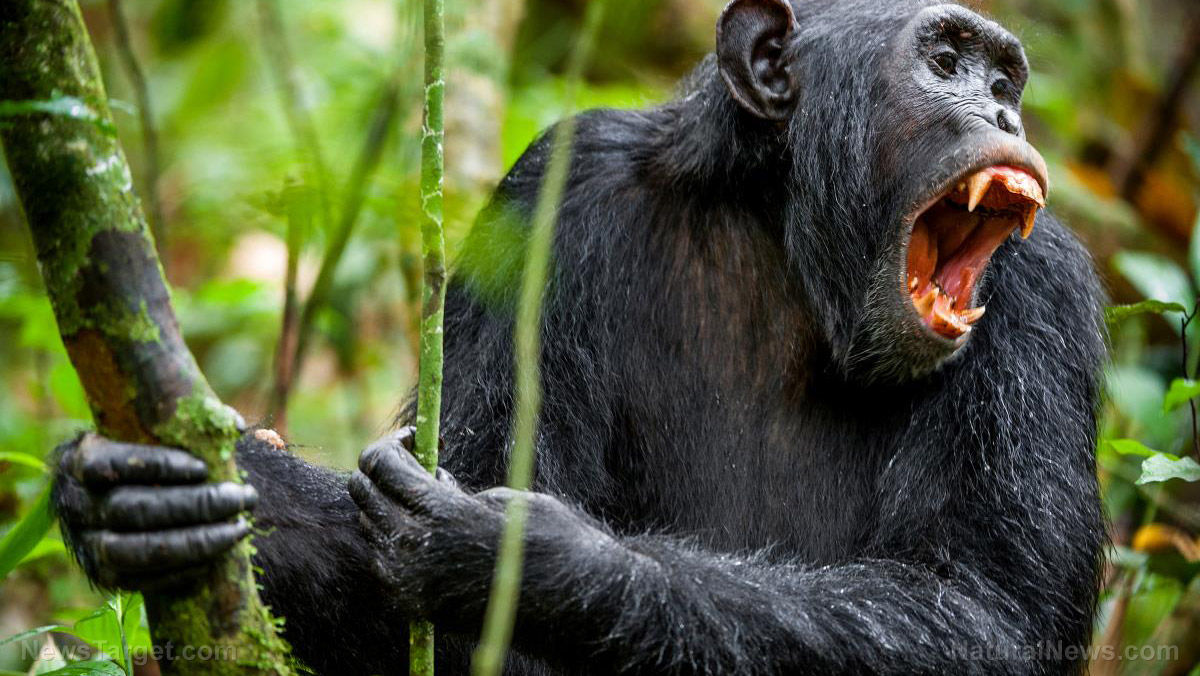Did you know that monkey-eating chimps that hunt baby monkeys devour the brain first? This might give us a clue to our own evolution
06/12/2018 / By Frances Bloomfield

The younger the red colobus monkey, the more likely a chimpanzee is to bite onto its head first. But rather than being an act of mere savagery, researchers believe that this horrific eating habit has a purpose. Namely, it gives them easy access to tender, delicious, and nutrient-packed brains.
This was the conclusion that was reached by a team of researchers at Gombe Stream National Park, Tanzania. According to LiveScience.com, the researchers documented 29 red colobus monkey attacks that were carried out by eight different chimpanzees. In all cases where the captured monkey was a juvenile, the chimpanzee was observed biting and pulling on the head as if to separate it from the body. Moreover, there were two instances where the chimpanzee appeared to be sucking on the head, most likely attempting to extract the brains.
Conversely, adult monkeys were killed and eaten in a variety of ways. However, the chimpanzees seemed to target the internal organs first, with a special focus on the liver. Compared to the brain, which is protected by the skull, internal organs are less of a challenge to take out and eat.
“This has important implications for our understanding of the nutritional benefits of meat-eating among primates, and highlights the need for future studies that measure the nutritional content of specific tissues and examine which are preferentially consumed or shared,” the researchers wrote in their study, published in the International Journal of Primatology. (Related: Yes, they’re conscious: Chimpanzee learns how to play paper, scissors, rock with a human child.)
In a separate statement to ExpressDigest.com, study author Ian C. Gilby noted that the brain is known to be particularly rich in nutrients. “We tend to just say meat is meat, but we know that the nutrient composition varies. The whole carcass is valuable but the brain is especially valuable,” said Gilby.
Mammal brains are high in fat. They also serve as a reliable source of long-chain polyunsaturated fatty acids, which cannot be obtained from plants. Long-chain polyunsaturated fatty acids, according to Gilby and co-author, Daniel Wawrzyniak, is necessary for brain function and for reducing the effects of certain diseases.
Not an isolated incident
Far from being unique to the chimpanzees of Gombe, this behavior has been spotted in Senegal as well. There, biological anthropologist, Jill Pruetz, witnessed chimpanzees consume bushbabies or galagos headfirst.
Like Gilby and Wawrzyniak, Pruetz believes that this practice is due to nutrition. Specifically, the desire to eat fat-rich foods. While this trait may not be shared by all chimpanzees, Pruetz has stated that it could give us a glimpse into our evolution as human beings.
“One of the best ways we have of understanding early hominids is using chimps as a model,” said Pruetz. “Getting the clearest picture of chimpanzee hunting can allow us to make predictions about how the earliest hominids may have behaved.”
To this, Gilby has concurred. He’s stated that the species predating early hominids may have started eating more meat to satiate a craving for fat. Going from that, we could eventually gain a clearer understanding of human evolution and uncover how we transitioned from the common ancestor shared by apes and humans.
Visit Scientific.news for more news stories and studies about human evolution.
Sources include:
Tagged Under: animal behavior, animals, biology, brain function, brains, carnivores, chimpanzee, chimps, Evolution, fat-rich food, hominids, human evolution, meat eaters, nutrition, red colobus monkeys, wildlife




















